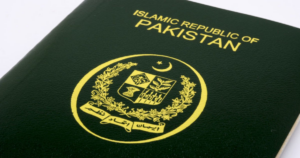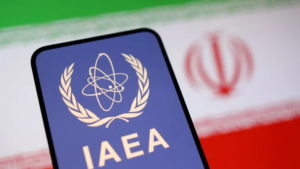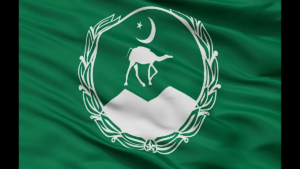
Booming population growth and poor economic policy management have relegated Pakistan from the richest economy in South Asia to the poorest over the last fifty years. Population expansion has held back saving, investment, and economic growth. Persistent macroeconomic imbalances have resulted in an unbearably high public debt interest burden and the country faces a wall of external debt repayments coming due. Corrective policies adopted under recent International Monetary Fund (IMF) programs have stabilized economic conditions, as have the softening of oil prices and debt rollovers agreed to by official external creditors. Going forward, however, policy plans look tough to sustain. On the revenue side, the effort looks excessively front loaded but not ambitious enough over the medium term. At the same time, insufficient financing implies an expenditure envelope that will not permit the necessary increase in social and investment spending to meaningfully lift living standards. An alternative strategy, under which deeper tax reforms are adopted at a steadier pace and more space is given to social and investment spending, would be more promising. Policy effort and expenditures would need to focus on enhancing access to family planning, health, and education services, especially for girls and women. That would support a virtuous cycle of higher saving, investment, and economic growth over the longer term. Increased international support at concessional terms would help rescue Pakistan’s economy.1
I. Introduction
Pakistan’s economic performance over the past five decades was dismal. Living standards improved far more slowly than in the rest of South Asia, while expansion in access to education and healthcare also lagged. Rapid population growth—much brisker than in neighboring countries—held down saving and investment substantially, severely constraining economic growth. At the same time, poor macroeconomic policies resulted in persistent imbalances punctuated by frequent crises. The latest crisis germinated during the COVID-19 pandemic, with the adoption of unaffordable budget and credit policies. The cost of servicing public debt had risen so much that it was eating up almost two-thirds of government revenue. As foreign exchange reserves were depleted and global oil prices escalated, default on external debt obligations seemed imminent as Pakistan faced a wall of annual debt repayments that far exceeded its reserves.
The adoption of corrective policies under an IMF financial support program has brought Pakistan back from the brink, but sustaining the program as currently designed will be challenging. Official creditors, who together hold the bulk of Pakistan’s external debt, have committed to rolling over principal repayments coming due, thereby addressing the near-term amortization wall. The normalization of world oil prices has also helped, dramatically reducing the import bill and allowing reserves to recover and the rupee to stabilize. However, insufficient new concessional financing has imposed an excessively harsh spending path. Pressing needs to improve education and health access for the poor and enhance climate resilience will be left unaddressed. Moreover, while plans to broaden the tax net are sound, the speed with which tax revenue is being targeted to rise is unrealistic and could prove self-defeating. In view of these risks, some observers have suggested debt restructuring as an alternative, but such a strategy would magnify, rather than mitigate, the risks.
A surer way to rescue Pakistan’s economy entails a more balanced, but also more sustained, fiscal adjustment effort coupled with strong and well-funded efforts to slow population growth and improve access to education and health services. Commitment by economic policymakers will be needed to raise revenue at a steady pace well beyond the level targeted under the IMF program, and to significantly redirect and augment spending. Far-reaching improvements must be achieved in the areas of health and education, especially for girls and women, so that the average Pakistani’s standard of living starts to catch up with that of the rest of South Asia. A better living standard is also essential to sustain the momentum for needed economic adjustment and reform. To achieve the saving and investment rates that would meaningfully lift economic growth over the longer term, population growth will have to slow markedly. With fiscal space already stretched as far as possible, such a strategy would rest on much surer footing with a sizable infusion of concessional financing from multilateral and bilateral creditors.
This paper is organized as follows. Section II starts by sketching the unfavorable past performance of the Pakistan economy, covering the relationship between Pakistan’s burgeoning population, low saving and investment, and anemic growth. It then outlines the principal macroeconomic challenges faced by the economy—the mushrooming interest bill that the government must pay on its debt and the wall of external debt repayments coming due over the next several years. Section III describes the IMF adjustment program that is now under way. It documents how the program has helped stabilize the economy but cautions that the initial pace of adjustment may prove self-defeating. Moreover, insufficient financing places the key objective—a sustained improvement in Pakistanis’ living standard—at risk. Section IV concludes by suggesting a better path under which a deeper adjustment effort is undertaken, with special attention to family planning, education, and health access to promote much greater saving, investment, and economic growth over the longer term. Increased international liquidity support on concessional terms over the near and medium term could greatly enhance the prospects for rescuing Pakistan’s economy.
II. What has gone wrong with Pakistan’s economy
Over the past half century, Pakistanis’ standard of living has declined precipitously relative to their South Asian counterparts. Galloping population growth and poor economic policy management are to blame. Population expansion has depressed saving and investment, which, in turn, has hamstrung economic growth. Meanwhile, the government has run up public debt by persistently failing to live within its means, so much so that interest on that debt now eats up almost two-thirds of public revenue and leaves little to spend on essential items. Economic policymakers’ preference to keep imports cheap—via an overvalued exchange rate while running up external debt—has made the economy uncompetitive and caused frequent crises. Foreign exchange shortages have periodically emerged, necessitating cycles of steep devaluation of the currency and adoption of painful austerity measures that have subsequently been reversed. During the latest episode in 2021–2023, foreign exchange reserves of the central bank fell to about two weeks’ worth of imports and less than one-quarter of the external public debt repayments falling due over the coming year. The rupee lost more than half of its value against the dollar and inflation jumped to 38 percent, seriously impacting the living standard of the average Pakistani.
Going from richest to poorest
Pakistan’s economic performance over the past fifty-five years has been dreary compared with that of its neighbors, in terms of both economic well-being and socio-economic attainment. In the early 1970s, the average Pakistani’s income was higher than that of the average Sri Lankan, and almost one and a half times that of the average Bangladeshi or Indian. By 2023, Pakistan’s per capita income had fallen, in relative terms, to only about half of the level in those other three countries.






